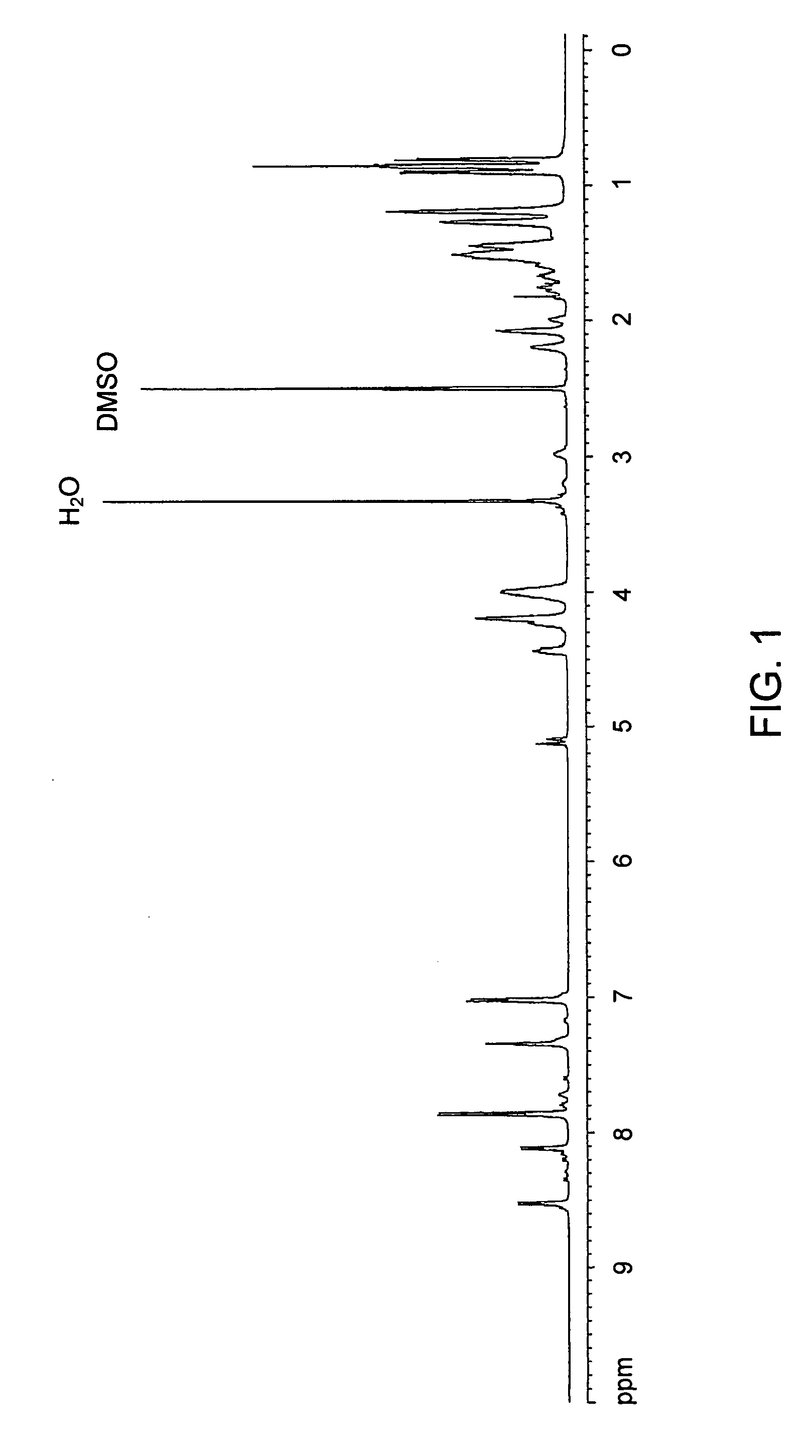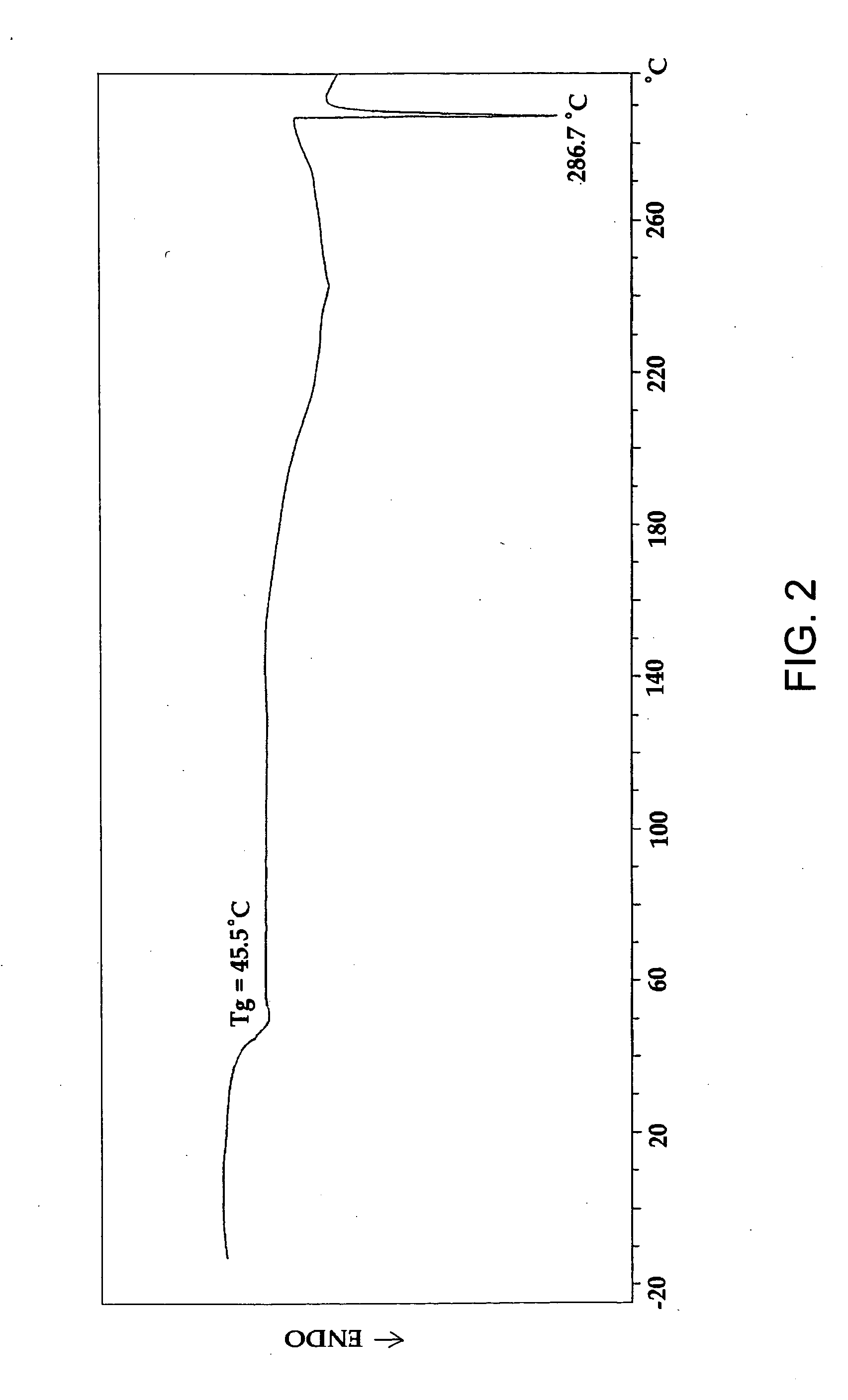Aromatic di-acid-containing poly (ester amide) polymers and methods of use
a polymer and di-acid-containing technology, applied in the field of drug delivery systems, can solve the problems of unsuitable textile polymer use, achieve the effects of high glass transition temperature (tg), improve thermomechanical properties, and introduce additional flexibility into the polymer
- Summary
- Abstract
- Description
- Claims
- Application Information
AI Technical Summary
Benefits of technology
Problems solved by technology
Method used
Image
Examples
example 1
Materials:
[0148] 4-hydroxybenzoic acid, 1,3-dibromopropane, p-nitrophenol, thionyl chloride, oxalyl chloride, triethylamine, and anhydrous N,N-dimethylformamide (DMF) were purchased from Aldrich Chemicals (St. Louis, Mo.), and used without further purification. Chloroform and chlorobenzene were dried over 4A molecular sieves. Other solvents and reagents: diethyl ether, ethyl acetate, sodium carbonate, sodium sulfate were purchased from Fisher Chemicals (UK).
Materials Characterization
[0149] NMR spectra were recorded by a Bruker AMX-500 spectrometer (Numega R. Labs, San Diego, Calif.) operating at 500 MHz for 1H NMR spectroscopy. Deuterated solvents CDCl3 or DMSO-d6 (Cambridge Isotope Laboratories, Cambridge, Mass.) were used with tetramethylsilane (TMS) as internal standard.
[0150] Melting points of monomers were determined on automatic Mettler Toledo FP62 Melting Point Apparatus (Mettler-Toledo International, Inc). Thermal properties of monomers and polymers were characterized ...
example 2
Materials
[0173] The compounds trans-3-hydroxycinnamic acid, trans-4-hydroxycinnamic acid, adipoyl chloride, sebacoyl chloride, oxalyl chloride (2M in methylene chloride) and pyridine were purchased from Aldich Chemicals (St, Louis, Mo.), and used without further purification. Anhydrous solvents, tetrahydrofurane and N′N-dimethylformamide (DMF, Aldrich) were used as received.
Monomer Synthesis:
Synthesis of 3,3′-(adipoyldioxy)dicinnamic Acid (Compound 3).
[0174] A solution of 3-Hydroxycinnamic acid (8.2 g, 0.05 mol) dissolved in 100 mL of 2N sodium hydroxide solution was vigorously stirred and cooled to about 5° C. At once adipoyl chloride (4.6 g, 0.025 mol) diluted with 25 mL of dry chloroform was added. After 30 min of stirring, whole precipitate was filtered off, washed with water, in 1N HCl, and dried. Product recrystallized from DMSO / ethanol / water (pH 2-3) to yield 6.6 g (56%) of compound 3, m.p. 238-239° C. (decomp.). Elemental Analysis, C24H22O8: Calculated values: C: 65.75...
PUM
| Property | Measurement | Unit |
|---|---|---|
| Fraction | aaaaa | aaaaa |
| Fraction | aaaaa | aaaaa |
| Time | aaaaa | aaaaa |
Abstract
Description
Claims
Application Information
 Login to View More
Login to View More - R&D
- Intellectual Property
- Life Sciences
- Materials
- Tech Scout
- Unparalleled Data Quality
- Higher Quality Content
- 60% Fewer Hallucinations
Browse by: Latest US Patents, China's latest patents, Technical Efficacy Thesaurus, Application Domain, Technology Topic, Popular Technical Reports.
© 2025 PatSnap. All rights reserved.Legal|Privacy policy|Modern Slavery Act Transparency Statement|Sitemap|About US| Contact US: help@patsnap.com



